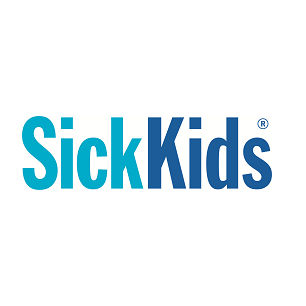预约演示
更新于:2025-05-07
Epileptic Syndromes
癫痫综合征
更新于:2025-05-07
基本信息
别名 Epilepsies, Syndromic、Epilepsy Syndrome、Epilepsy Syndromes + [7] |
简介 EPILEPTIC SEIZURES that are of similar type and age of onset and have other similar features (e.g., clinical course, EEG findings, genetic association and neuropathology). |
关联
106
项与 癫痫综合征 相关的药物作用机制 GABAA receptor 正变构调节剂 |
在研机构 |
原研机构 |
非在研适应症 |
最高研发阶段批准上市 |
首次获批国家/地区 美国 |
首次获批日期2022-03-18 |
作用机制 5-HT1D receptor激动剂 [+4] |
在研机构 |
原研机构 |
在研适应症 |
非在研适应症 |
最高研发阶段批准上市 |
首次获批国家/地区 美国 |
首次获批日期2020-06-25 |
616
项与 癫痫综合征 相关的临床试验NCT06924827
A Clinical Study of the Transition of Children From 'Artisanal' Cannabidiol to Epidiolex
The goal of this clinical trial is to learn the best way to switch children with Lennox-Gastaut Syndrome (LGS) or Dravet Syndrome (DS) taking 'artisanal' (non pharmaceutical-grade) cannabidiol (CBD) to Epidiolex for treatment of seizures. The main questions it aims to answer are:
* How well does a gradual switch from 'artisanal' CBD to Epidiolex work?
* Does the same dose of Epidiolex as 'artisanal' CBD work best?
* What side-effects or medical problems do participants have when switching from 'artisanal' CBD to Epidiolex?
Researchers will examine how successful switching from 'artisanal' CBD to Epidiolex is.
Participants will:
* Gradually increase their dose of Epidiolex and reduce their dose of 'artisanal' CBD until they are taking just Epidiolex
* Visit the clinic five times over 20 weeks for checkups and tests
* Keep a diary of their seizures, symptoms and the number of times they use a rescue seizure medication
* How well does a gradual switch from 'artisanal' CBD to Epidiolex work?
* Does the same dose of Epidiolex as 'artisanal' CBD work best?
* What side-effects or medical problems do participants have when switching from 'artisanal' CBD to Epidiolex?
Researchers will examine how successful switching from 'artisanal' CBD to Epidiolex is.
Participants will:
* Gradually increase their dose of Epidiolex and reduce their dose of 'artisanal' CBD until they are taking just Epidiolex
* Visit the clinic five times over 20 weeks for checkups and tests
* Keep a diary of their seizures, symptoms and the number of times they use a rescue seizure medication
开始日期2025-07-02 |
申办/合作机构 |
SLCTR/2025/015
Multicentre, randomized, controlled clinical trial on 7-day followed by maintenance therapy for 10 weeks vs. 14-day and no maintenance course of prednisolone for the treatment of infantile epileptic spasms syndrome (IESS)
开始日期2025-06-01 |
申办/合作机构 |
NCT06872125
EMPEROR: a Multicenter, Randomized, Double-blind, Sham-controlled, Parallel Group, Phase 3 Study Evaluating the Efficacy, Safety, and Tolerability of Zorevunersen (STK-001) in Patients with Dravet Syndrome
The purpose of the study is to evaluate the efficacy, safety, and tolerability of zorevunersen in Patients with Dravet syndrome.
开始日期2025-06-01 |
申办/合作机构 |
100 项与 癫痫综合征 相关的临床结果
登录后查看更多信息
100 项与 癫痫综合征 相关的转化医学
登录后查看更多信息
0 项与 癫痫综合征 相关的专利(医药)
登录后查看更多信息
40,247
项与 癫痫综合征 相关的文献(医药)2025-12-31·European Journal of Psychotraumatology
Comparison of neurological and psychiatric profiles of people with epilepsy based on the presence and timing of potentially psychologically traumatic experiences
Article
作者: Hingray, Coraline ; Tarrada, Alexis ; Mezouar, Nicolas ; El-Hage, Wissam ; Maillard, Louis ; Ertan, Deniz
2025-12-31·NMC Case Report Journal
Verbal Memory Localized in Non-language-dominant Hemisphere: Atypical Lateralization Revealed by Material-specific Memory Evaluation Using Super-selective Wada Test
Article
作者: UKISHIRO, Kazushi ; KIKUCHI, Hana ; ENDO, Hidenori ; NAKASATO, Nobukazu ; SUZUKI, Kyoko ; OTA, Shoko ; KAKINUMA, Kazuo ; KATSUSE, Kazuto ; OSAWA, Shin-Ichiro ; JIN, Kazutaka
2025-12-01·Child's Nervous System
Resting-state functional MRI in pediatric epilepsy: a narrative review
Review
作者: Voyvodic, James T ; Grant, Gerald A ; Sexton, Daniel P ; Tong, Elizabeth ; Andrews, Edna
1,042
项与 癫痫综合征 相关的新闻(医药)2025-05-01
EPIDIOLEX has significant market potential due to the growing demand for alternative therapies and its effectiveness in treating rare seizure disorders like Lennox-Gastaut syndrome and Dravet syndrome. As awareness around the benefits of CBD in treating neurological conditions increases, EPIDIOLEX stands to benefit from expanding indications and market reach.
LAS VEGAS, May 1, 2025 /PRNewswire/ -- DelveInsight's '
EPIDIOLEX Market Size, Forecast, and Market Insight Report' highlights the details around EPIDIOLEX, the first FDA-approved prescription cannabidiol (CBD) to treat seizures associated with Lennox-Gastaut syndrome (LGS), Dravet syndrome, or tuberous sclerosis complex (TSC) in patients 1 year of age or older. The report provides product descriptions, patent details, and competitor products (marketed and emerging therapies) of EPIDIOLEX. The report also highlights the historical and forecasted sales from 2020 to 2034 segmented into 7MM [the United States, the EU4 (Germany, France, Italy, and Spain), the United Kingdom, and Japan].
Jazz Pharmaceuticals' EPIDIOLEX (cannabidiol) Overview
EPIDIOLEX (formerly known as GWP42003-P and marketed as EPIDYOLEX in Europe) is the first plant-based, prescription cannabis-derived oral medication developed by GW Pharmaceuticals. It represents a new category of antiepileptic drugs with a unique mechanism of action. The active compound, cannabidiol (CBD), is a naturally occurring cannabinoid found in the Cannabis sativa L. plant. While the exact way EPIDIOLEX works to reduce seizures in humans remains unclear, it is distinct from traditional anticonvulsants. CBD does not act through CB1 receptors or by blocking voltage-gated sodium channels, which are typical pathways for other antiepileptic drugs.
Instead, CBD is thought to work by influencing multiple internal pathways, potentially producing a combined anticonvulsant effect. These include enhancing neuronal inhibition (through synaptic and extrasynaptic GABA channels), affecting intracellular calcium levels (via TRPV channels, VDAC, and GPR55), and reducing inflammation, possibly via adenosine modulation. Importantly, CBD does not directly bind to or activate the CB1 or CB2 receptors at levels relevant to its seizure-reducing effects. Ongoing research is examining other possible mechanisms such as interactions with adenosine, glycine, GABAergic systems, and serotonin receptors.
EPIDIOLEX has received regulatory approval in numerous countries, including the U.S. (FDA), Europe (European Commission), Great Britain (MHRA), Australia (Therapeutic Goods Administration), Switzerland (Swissmedic), Israel (Ministry of Health), and New Zealand (Medicines and Medical Devices Safety Authority). It is formulated as an oral solution containing highly purified CBD. In the U.S., it is approved to treat seizures linked to Lennox-Gastaut syndrome (LGS), Dravet syndrome (DS), and tuberous sclerosis complex (TSC) in patients aged one year and older. In the European Union, under the name Epidyolex, it is approved as an add-on treatment with clobazam for LGS and DS in patients two years and older, and for TSC-associated seizures as well. Both the FDA and EMA have granted Orphan Drug Designation (ODD) for EPIDIOLEX/EPIDYOLEX for these conditions.
EPIDIOLEX/EPIDYOLEX net product sales rose by
15% to
USD 972.4 million in 2024 and by
14% to
USD 275.0 million in the fourth quarter of 2024, compared to the corresponding periods in 2023.
Learn more about EPIDIOLEX/EPIDYOLEX projected market size for DEE @
EPIDIOLEX Market Potential
Developmental and epileptic encephalopathies (DEE) encompass a group of severe neurological conditions marked by developmental delays and persistent epilepsy. These disorders typically present early in life and are linked to significant cognitive deficits. According to DelveInsight's analysis, there were approximately
287K diagnosed prevalent cases of DEE across the 7MM in 2024. This number is projected to increase due to the rise in neurological disorders, including epilepsy, as well as environmental and maternal health factors contributing to a higher DEE prevalence throughout the forecast period (2025−2034).
The US FDA has approved a range of medications for conditions like LGS, Dravet Syndrome, and CDKL5 Deficiency Disorder, including various drug classes such as sodium channel modulators, GABA receptor modulators, calcium channel blockers, receptor blockers, and others. Some of the available anti-epileptic drugs (AEDs) include
FINTEPLA, EPIDIOLEX, TOPAMAX, BANZEL, LAMICTAL, FELBATOL, ONFI, KLONOPIN, DIACOMIT, SABRIL, and more.
In 2024, the total market size for DEE in the 7MM was around
USD 2.3 billion, and this figure is expected to grow by 2034, driven by wider adoption of approved therapies due to label expansions and the introduction of emerging treatments.
Discover more about the DEE market in detail @
Developmental and Epileptic Encephalopathy Market Report
Emerging Competitors of EPIDIOLEX
Some of the drugs in the pipeline include
EPX-100 (Harmony Biosciences),
Bexicaserin (Lundbeck),
Zorevunersen (Stoke Therapeutics/Biogen),
Relutrigine (Praxis Precision Medicines), and others. In August 2024, the FDA removed a partial clinical hold as the company advances toward a Phase III registrational study of zorevunersen (STK-001) in children and adolescents with Dravet syndrome.
In
July 2024, Longboard Pharmaceuticals announced that the FDA had granted Breakthrough Therapy designation for its investigational drug bexicaserin for the treatment of seizures associated with DEEs for patients 2 years of age or older.
To know more about the number of competing drugs in development, visit @
EPIDIOLEX Alternatives
Key Milestones of EPIDIOLEX
In
August 2024, Jazz Pharmaceuticals reported top-line results from a Phase 3 open-label, single-arm study conducted in Japan, assessing the safety and effectiveness of its cannabidiol oral solution (marketed globally as EPIDIOLEX/EPIDYOLEX) as an add-on therapy for seizures linked to Lennox-Gastaut syndrome (LGS), Dravet syndrome (DS), or tuberous sclerosis complex (TSC). While the trial did not achieve its primary efficacy goal—defined as a pre-specified percentage reduction in seizure frequency during the up-to-16-week treatment period compared to baseline in Japanese pediatric patients—numerical improvements were noted in both the primary and several secondary measures. The study did not identify any new safety concerns.
In
May 2021, Jazz Pharmaceuticals acquired EPIDIOLEX as part of the acquisition of GW Pharmaceuticals plc, or GW, which expanded its growing neuroscience business with a global, high-growth childhood-onset epilepsy franchise.
In
April 2021, EPIDYOLEX was approved for adjunctive therapy of seizures associated with TSC for patients 2 years of age and older in the EU.
In
July 2020, EPIDYOLEX was approved for the treatment of seizures associated with TSC in patients one year of age and older. FDA also approved the expansion of all existing indications, LGS and DS, to patients one year of age and older.
In
September 2019, the European Commission approved EPIDYOLEX for use as adjunctive therapy of seizures associated with LGS or DS, in conjunction with clobazam, for patients two years of age and older.
In
June 2018, EPIDIOLEX was approved in the US for the treatment of seizures associated with two rare and severe forms of epilepsy, LGS and DS, in patients two years of age and older.
EPIDIOLEX Launch Status
EPIDIOLEX was launched on November 1, 2018, in the US market after FDA approval for the treatment of seizures associated with LGS or Dravet syndrome in patients two years of age and older.
EPIDYOLEX was launched in 2019 in Germany and the UK market for use as adjunctive therapy for seizures associated with LGS or Dravet syndrome, in conjunction with clobazam, for patients two years of age and older (GW Pharmaceuticals, 2019b).
In 2021, EPIDYOLEX was launched in Spain.
In the first quarter of 2022, the company launched EPIDYOLEX for LGS, Dravet syndrome, and TSC in Ireland, for TSC in Scotland and Wales.
In the third quarter of 2022, the company launched EPIDYOLEX for TSC in Italy and Switzerland.
In the fourth quarter of 2022, the company successfully completed the pricing and reimbursement process and commercial launch of EPIDYOLEX in France.
Discover how EPIDIOLEX/EPIDYOLEX is shaping the DEE treatment landscape @
EPIDIOLEX CBD
EPIDIOLEX Market Dynamics
EPIDIOLEX, the first
FDA-approved cannabidiol (CBD)-based medication for the treatment of rare forms of epilepsy, has had a significant impact on the pharmaceutical market since its approval in 2018. The drug is primarily used to treat seizures associated with Dravet syndrome and Lennox-Gastaut syndrome, two rare and severe forms of epilepsy. The market dynamic for EPIDIOLEX is shaped by several factors, including
increasing awareness of its therapeutic potential, the
expanding medical cannabis industry, and the
growing demand for alternative treatments to traditional anti-epileptic drugs.
One of the main drivers of the EPIDIOLEX market is the
rising acceptance of CBD-based therapies. As medical cannabis becomes more mainstream and research into its medicinal properties continues to grow, patients and healthcare providers are increasingly turning to EPIDIOLEX as a treatment option. The
growing body of clinical evidence supporting its effectiveness and safety has reinforced this trend. Additionally, as the stigma around cannabis-derived medications continues to fade, it opens up more
opportunities for EPIDIOLEX in both pediatric and adult patient populations.
However, the market for EPIDIOLEX is not without its challenges.
High treatment costs and insurance coverage issues can limit accessibility for some patients, especially in markets outside the United States. Despite its clinical efficacy, the
price point for EPIDIOLEX remains a point of contention, as it may not be affordable for all families, especially when compared to other conventional anti-epileptic drugs. Furthermore,
competition from other cannabinoid-based therapies, as well as
new developments in the broader epilepsy drug market, could impact the drug's market share over time.
Looking ahead, the market dynamics for EPIDIOLEX will likely continue to evolve as the
global regulatory landscape changes and
new clinical trials further establish its benefits in other neurological conditions. With increasing research into CBD's potential applications, there may be opportunities for EPIDIOLEX to expand its indications, providing a solid foundation for its continued growth. However, market growth will also depend on the
ability to address pricing concerns, improve insurance coverage, and navigate potential competitive pressures from both traditional and emerging therapies.
Dive deeper to get more insight into EPIDIOLEX/EPIDYOLEX's strengths & weaknesses relative to competitors @
EPIDIOLEX Market Drug Report
Table of Contents
Related Reports
Developmental and Epileptic Encephalopathies Market
Developmental and Epileptic Encephalopathies Market Insights, Epidemiology, and Market Forecast – 2034 report deliver an in-depth understanding of the disease, historical and forecasted epidemiology, as well as the market trends, market drivers, market barriers, and key DEE companies, including
vid Therapeutics, Stoke Therapeutics, Biogen, Harmony Biosciences, Lundbeck (Longboard Pharmaceuticals), Praxis Precision Medicines, SK Life Science, Cerecin Neurosciences, Encoded Therapeutics, Praxis Precision Medicines, among others.
Developmental and Epileptic Encephalopathies Pipeline
Developmental and Epileptic Encephalopathies Pipeline Insight
– 2025 report provides comprehensive insights about the pipeline landscape, pipeline drug profiles, including clinical and non-clinical stage products, and the key DEE companies, including
Denovo Biopharma, Cantex Pharmaceuticals, CNS Pharmaceuticals, CANbridge Pharmaceuticals, Vaximm, Inovio Pharmaceuticals, Mustang Bio, Bullfrog AI Holdings, Cantex, Chimeric Therapeutics, Philogen, Boehringer Ingelheim, Photonamic GmbH, Berg Pharma, Beyond Bio, Genenta Science, Polaris Pharmaceuticals, Telix Pharmaceuticals, Shanghai Simnova Biotechnology, NEONC Technologies, among others.
Dravet Syndrome Market
Dravet Syndrome Market Insights, Epidemiology, and Market Forecast – 2034 report deliver an in-depth understanding of the disease, historical and forecasted epidemiology, as well as the market trends, market drivers, market barriers, and key Dravet syndrome companies including
Biocodex, GW Pharmaceuticals, Zogenix, Ovid Therapeutics, PTC Therapeutics, among others.
Lennox-Gastaut Syndrome Market
Lennox-Gastaut Syndrome Market Insights, Epidemiology, and Market Forecast – 2034 report delivers an in-depth understanding of the disease, historical and forecasted epidemiology, as well as the market trends, market drivers, market barriers, and key Lennox-Gastaut syndrome companies, including
GlaxoSmithKline, Meda Pharmaceuticals, Roche, Lundbeck, Greenwich Biosciences, Janssen Pharmaceuticals, Eisai, Zogenix, Takeda, Ovid Therapeutics, among others.
About DelveInsight
DelveInsight is a leading Business Consultant and Market Research firm focused exclusively on life sciences. It supports pharma companies by providing comprehensive end-to-end solutions to improve their performance. Get hassle-free access to all the healthcare and pharma market research reports through our subscription-based platform PharmDelve
.
Contact Us
Shruti Thakur
[email protected]
+14699457679
Logo:
SOURCE DelveInsight Business Research, LLP
WANT YOUR COMPANY'S NEWS FEATURED ON PRNEWSWIRE.COM?
440k+
Newsrooms &
Influencers
9k+
Digital Media
Outlets
270k+
Journalists
Opted In
GET STARTED
上市批准临床3期并购突破性疗法孤儿药
2025-04-28
·梅斯医学
8岁的小浩,原本是个聪明又活泼的孩子,可最近老师频频反映:“上课总是走神,提问也反应迟钝,好像根本没听见。”家长一开始以为小浩只是贪玩偷懒,气得当着全班批评,还让他在家罚抄检讨。可渐渐地,家长发现不对劲——小浩越来越依赖看人嘴型交流,叫他必须大声喊几遍才有反应。带着满腹疑问,家长带他来到医院耳鼻喉科检查。听力测试结果让人震惊:小浩双耳感音神经性耳聋,属于非综合征性耳聋!进一步完善基因检测,发现孩子携带了GJB2基因突变,而且这种突变是常见的遗传性耳聋原因之一。医生解释,小浩外表完全正常,听力却在慢慢下降,早期几乎没有明显症状,才导致被误认为是"走神"或者"注意力不集中"。“什么是非综合征性耳聋当患者仅仅表现耳聋特别是一些不明原因的感音神经性耳聋,在出生时已存在或成长过程中的渐进性的听力衰退,非病毒感染,非外伤,非药物导致的这一类感音神经性耳聋,我们称之为非综合征性耳聋。“临床表现主要表现为听力损失。GJB2相关性耳聋以往多被认为是通过新生儿听力筛查即可确诊的先天性、双侧、对称性重度语前聋,但近年来发现部分病例可表现为不对称或单侧听力下降,听力损失程度可从轻度至极重度不等,也存在出生后逐渐发生或进行性加重的耳聋。SLC26A4(PDS基因)相关性耳聋常伴有内耳前庭水管扩大。不同种族存在突变热点差异,中国人群中常见的两种突变为IVS7-2A>G和c.2168A>G。患儿通常在出生时听力正常或轻度下降,后期因头部撞击、跌倒、感冒发热等内耳压力变化诱发听力急剧下降,表现为迟发型、波动性、渐进性听力损失,显著影响言语发育。GJB3相关性耳聋由我国学者最早报道,主要表现为中年后出现的显性遗传性高频听力下降,偶尔累及个别频率,对婴幼儿听觉和言语发育影响较小。线粒体基因相关性耳聋以MTRNR1 1555A>G和1494C>T突变最常见,呈母系遗传。携带突变者对氨基糖苷类药物极为敏感,接触微量即可诱发严重听力损失。临床表现差异大,受突变异质率和核基因修饰影响。除药物致聋外,也可在无明确药物接触史下于成年期发生非综合征性听力下降。“诊断临床中,对于无其他系统受累的耳聋患者,无论是否有家族史,都应首先考虑非综合征性耳聋的可能。同时需排除耳聋作为综合征中一种表现的综合征性耳聋。鉴别时还需重点区分由环境因素引起的获得性耳聋。根据发病年龄不同,环境因素所致耳聋的特点也有所不同。儿童期环境因素导致的先天性耳聋多由巨细胞病毒(CMV)感染引起,围生期感染率约为0.64%。其中10%出现临床症状,包括神经系统异常、肝功能障碍及特异性皮疹,且约半数伴有听力损失。在90%无症状感染者中,单侧或双侧听力下降的比例一般不超过15%。此外,胎儿期感染TORCH病原体(弓形体、风疹病毒、巨细胞病毒、疱疹病毒)或产后感染脑膜炎的病原菌(如奈瑟氏菌、嗜血杆菌、链球菌)也可引起儿童期获得性耳聋。成年期获得性耳聋多与环境因素与遗传易感性的相互作用有关,典型代表为老年性耳聋和噪声性耳聋。此外,长期接触耳毒性药物也可引发药物性耳聋。“治疗非综合征性耳聋多数表现为先天性或迟发型感音神经性耳聋。对于轻度和中度耳聋患者,应积极保护残余听力,避免诱发听力加重的危险因素,如前庭水管扩大患儿需预防感冒、发热、头部轻微外伤、气压性创伤等情况,药物性耳聋基因携带者及其母系家族成员应进行用药警示,避免耳毒性药物暴露,防止“一针致聋”,同时应避免噪声暴露及高热、病毒感染等。根据患者需求,必要时应及时选配助听器。对于重度或极重度耳聋患者,当助听器无法满足听觉言语发育和交流需求时,人工耳蜗植入被认为是目前唯一疗效确切、安全可靠的治疗手段。近年来,关于内耳感音毛细胞再生、功能恢复及遗传性耳聋基因治疗的研究取得快速进展,在动物模型中已观察到可喜成果,未来有望为临床治疗提供更多选择参考资料:[1]孙喜斌,魏志云,于丽玫,等.中国听力残疾人群现状及致残原因分析[J].中华流行病学杂志,2008,29(7):643-646.[2]戴朴,袁永一. 耳聋基因诊断与遗传咨询[M].北京:人民卫生出版社,2017 [3] 王秋菊,韩东一. 遗传性听力损失及其综合征[M]. 北京:人民军医出版 社,2016来源 | 梅斯医学编辑 | wanny神经系统罕见病交流群↓点击下方“阅读原文”,下载梅斯医学APP吧!
2025-04-24
·金赛药业
前言2025年4月18日至19日,中国临床肿瘤学会(CSCO)指南大会在泉城济南隆重召开。本次大会发布了2025版《CSCO肿瘤厌食-恶病质综合征诊疗指南》,这是自2021版《CSCO肿瘤恶病质诊疗指南》以来的首次全面更新,为临床实践提供了权威指导。肿瘤厌食-恶病质综合征(Cancer-related Anorexia Cachexia Syndrome,CACS)作为肿瘤治疗中亟待解决的重要临床问题,不仅显著影响抗肿瘤治疗效果,还严重损害患者的生活质量,缩短生存时间。此外,CACS还会加重患者及其家庭的经济负担。为此,医脉通特邀浙江大学附属邵逸夫医院潘宏铭教授、蚌埠医科大学第一附属医院王杰军教授和河南省肿瘤医院罗素霞教授,围绕新版指南中CACS诊疗的最新推荐意见进行深入解读,助力提升CACS诊疗水平。问题一:自2021年首部《CSCO肿瘤恶病质诊疗指南》发布以来,今年迎来了该指南的首次更新,同时指南更名为《CSCO肿瘤厌食-恶病质综合征诊疗指南》。您作为2025版指南制定组的专家,能否分享一下该指南制定的初衷和背景?潘宏铭教授2021年《CSCO肿瘤恶病质诊疗指南》的发布为临床实践奠定了初步的诊疗框架,具有重要的里程碑意义。然而,随着研究的深入和临床经验的积累,我们发现原有指南在厌食与恶病质的关联性、多学科综合治疗策略以及个体化干预等方面已无法完全满足当前临床需求。而且,在既往临床实践中,不少医务人员对恶病质的定义仍存在认知局限,往往仅在患者进入恶病质难治期时才予以诊断和干预,导致患者错失最佳治疗时机,影响预后转归。基于这一现状,2025版指南特别将名称更新为《肿瘤厌食-恶病质综合征诊疗指南》,旨在引导临床医生通过识别厌食这一早期预警信号,对筛查诊断为肿瘤厌食-恶病质综合征的患者实施早期干预,从而将治疗窗口前移至恶病质前期阶段。在恶病质前期,患者虽未出现显著的非自主体重减轻(即≤5%),但已表现出代谢异常,包括厌食和糖耐量异常等特征性改变。同时,CRP、IL-6、γ-IFN、肿瘤坏死因子等炎症因子水平也呈现异常升高,这些早期生物学标志物的变化能够为临床早期识别和干预提供重要依据。王杰军教授回顾既往临床实践,单纯关注恶病质存在明显局限性,往往导致患者进入晚期阶段才被发现,此时干预效果显著受限。指南更新将肿瘤相关厌食纳入诊疗范畴,旨在通过这一早期预警信号实现更早的恶病质预判与诊断,从而为早期干预创造有利条件。我们建议临床医生应更加关注肿瘤相关厌食这一早期预警信号,通过多维度评估(包括食欲变化、营养摄入、炎症指标等)实现对恶病质前期的精准识别。此次指南修订基于全国200多位专家的深入讨论和临床经验总结,旨在更早、更准确地识别CACS,为早期干预提供科学指导。问题二:2025版《CSCO肿瘤厌食-恶病质综合征诊疗指南》进行了重要更新,可否请您简单介绍一下新版指南的更新要点?并谈谈应如何背靠指南,为癌性厌食患者提供更优的治疗方案?潘宏铭教授2025版《CSCO肿瘤厌食-恶病质综合征诊疗指南》在多个方面进行了全面更新,旨在为临床医生提供更科学、更精准的诊疗依据。以下是新版指南的主要更新要点1:1)指南名称的更新:新版指南将名称明确为“肿瘤厌食-恶病质综合征”,这一变化反映了对CACS发病机制和诊疗理念的深入理解。CACS不仅仅是单纯的体重下降或食欲减退,而是一个复杂的多因素综合征,涉及代谢紊乱、炎症反应、内分泌失调、心理障碍等多个方面。2)CACS的诊断标准和症状管理:新版指南对CACS的诊断标准进行了细化,强调了多维度评估的重要性。除了传统的体重下降和食欲减退外,新版指南特别强调了系统性炎症在CACS中的核心作用,建议将CRP>5 mg/L作为系统性炎症的下限值,并结合IL-1β、IL-6、TNF-α等炎症标志物进行综合评估。为更全面地评估CACS患者的疲乏症状,指南新增了简易疲乏量表、Piper疲乏修订量表作为标准化评估工具。这些量表能够帮助临床医生更准确地量化患者的疲乏程度,从而制定更有针对性的干预措施。3)药物治疗的更新:新版指南在药物治疗方面进行了重要更新,推荐醋酸甲地孕酮口服混悬液作为改善晚期肿瘤患者食欲和生活质量的有效药物。指南明确推荐醋酸甲地孕酮口服混悬液的剂量为5ml/d,并建议治疗期为1-12周。这一推荐基于临床研究数据,能够在改善食欲和体重的同时,最大程度地降低不良反应风险。这一更新为临床医生提供了更实用、更安全的药物治疗方案,有助于优化CACS患者的管理。4)多模式综合管理:新版指南特别强调了多模式综合管理的重要性,充分整合了我国在肿瘤治疗领域的独特优势。中医疗法包括针灸、艾灸、穴位按摩等。此外,指南还涉及音乐疗法、心理干预、康复训练和运动等治疗方式。罗素霞教授CACS是一种以持续性骨骼肌丢失(伴有或不伴有脂肪组织丢失)为特征,且不能被常规营养支持完全缓解,可逐步导致功能障碍的多因素综合征1。在CACS的药物治疗领域,甲地孕酮作为经典的一线治疗方案,在改善患者食欲、增加体重及提升生活质量方面具有明确疗效2-4。研究数据显示,与常规剂型相比,纳米晶体甲地孕酮口服混悬液展现出更优越的临床效果。具体而言,在12周治疗期内,使用纳米晶体甲地孕酮口服混悬液的患者平均体重增加达5.4公斤,较上一代剂型提升1.5倍5。此外,纳米晶体甲地孕酮口服混悬液具有更快的起效速度,其血药浓度达峰时间较传统剂型缩短70%,体重显著增加的最早时间从14天提前至3天5。基于显著的临床的疗效,2025版《CSCO肿瘤厌食-恶病质综合征的诊疗指南》,推荐将醋酸甲地孕酮口服混悬液用于CACS的治疗,以改善晚期肿瘤患者的食欲和生命质量。问题三:基于2025版《CSCO肿瘤厌食-恶病质综合征诊疗指南》的发布,您认为对临床实践具有哪些重要意义?这将为CACS患者带来哪些实际变化和获益?王杰军教授在2025版《CSCO肿瘤厌食-恶病质综合征诊疗指南》中,我们提出了综合征的治疗方案,反映出国内外专家对肿瘤患者厌食-恶病质综合征认知的逐步加深。未来,厌食-恶病质的治疗将成为肿瘤治疗的重要补充,值得我们关注的全新领域。新指南将为我们提供了共同遵循的准则,强调以预防为主、防治结合、早期干预和多模式管理的原则。甲地孕酮是目前临床上医生对厌食治疗认知度较高的药物,尽管已经应用多年,但仍面临许多临床问题。随着科学的发展,新一代纳米晶体醋酸甲地孕酮口服混悬液通过纳米技术改善了生物利用度,解决了以往制剂在使用中的不便,提高了患者的依从性和疗效。我们呼吁通过推广共识和指南,让更多患者及医务人员了解肿瘤厌食-恶病质的治疗,并帮助患者从中获益。罗素霞教授2025版《CSCO肿瘤厌食-恶病质综合征诊疗指南》的发布,标志着CACS诊疗进入规范化、个体化和综合化的新时代。新版指南明确了CACS诊断标准,为临床医生提供清晰、可操作的诊断框架,有效避免漏诊或误诊。同时,整合最新临床研究证据,确保治疗方案科学、前沿且可靠。指南强调个体化治疗策略,涵盖营养支持、药物治疗和心理干预等多维度综合管理,显著提高治疗有效性和安全性,改善患者整体健康状况。通过早期诊断和精准治疗,CACS患者将获得更全面支持,生活质量显著提升,生存期延长。同时,优化治疗方案、降低医疗成本和提高治疗依从性,显著减轻患者家庭和社会经济负担。这一综合管理策略不仅提升患者临床获益,也为医疗资源合理配置和社会负担减轻提供切实解决方案。潘宏铭教授2025版《CSCO肿瘤厌食-恶病质综合征诊疗指南》的发布将为我国肿瘤治疗领域的临床实践提供权威的指导依据。我们期待在新版指南颁布后,通过全国范围的学术巡讲活动,进一步提升医务人员对CACS诊疗重要性的认知水平。这将有助于推动我国CACS诊疗的规范化发展,使肿瘤患者不仅能够从抗肿瘤治疗中获益,延长生存期,更能通过规范化的支持治疗获得生活质量的显著提升,最终实现肿瘤患者的全方位获益。 专家简介潘宏铭 教授浙江大学附属邵逸夫医院主任医师、教授、博士导师国家新药审评专家国家合理用药肿瘤药物专家委员会委员国家卫健委继教中心肿瘤学综合组组长中国抗癌协会理事及肿瘤靶向治疗专委会主任委员中国临床肿瘤学会常务理事CSCO支持和康复专家委员会主任委员发表SCI论文200余篇,主持和参加临床试验340多项,主编由人民卫生出版社等出版的《肿瘤免疫治疗严重不良反应案例分析》、《CSCO肿瘤患者营养治疗指南》、 《CSCO肿瘤恶液质诊疗指南》、《肿瘤化疗的毒副反应和防治》、《肿瘤内科诊治策略》、《肿瘤内科合理治疗和用药技巧》、《消化道肿瘤合理用药指南》等,主持国家重大新药创制专项、国家自然科学基金和浙江省重大科技专项等课题10多项,2022年获人民名医卓越建树奖王杰军 教授主任医师,教授,博士研究生导师,医学博士国家卫生健康委员会肿瘤合理用药专家委员会副主任委员中国临床肿瘤学会肿瘤支持与康复治疗专家委员会(SCRC)主任委员中国临床肿瘤学会肿瘤营养专家委员会候任主任委员中国抗癌协会癌症康复与姑息治疗专业委员会(CRPC)荣誉主任委员中国生命关怀协会副会长中国临床肿瘤学会(CSCO)常务理事中国人民解放军肿瘤专业委员会顾问上海抗癌协会副理事长上海市防癌抗癌事业发展基金会副理事长国家药物食品监督管理局药物审评专家委员会委员罗素霞 教授河南省肿瘤医院业务副院长,二级教授,博士生导师国务院政府特殊津贴专家,中原名医全国五一劳动奖章获得者,全国优秀科技工作者中国抗癌协会康复与姑息治疗专业委员会主任委员中国临床肿瘤学会(CSCO)肿瘤支持与康复治疗委员会副主任委员中国抗癌协会伦理专业委员会副主任委员河南省恶性肿瘤(食管癌)临床医学研究中心主任河南省药学会GCP专业委员会主任委员河南省抗癌协会康复与姑息专业委员会主任委员河南省医学会肿瘤学分会主任委员参考文献(向上滑动查看):1. 中国抗癌协会肿瘤营养专业委员会.CSCO肿瘤厌食-恶病质综合征诊疗指南(2025年版).2. NCCN姑息指南(2023v1).3. 中国临床肿瘤学会.肿瘤恶病质诊疗指南. 2021.4. 中国抗癌协会肿瘤营养专业委员会.肿瘤恶液质临床诊断与治疗指南(2020版).5. Cilla D D ,et al.A Pilot Study Comparing Megestrol Acetate Concentrated Suspension (MA-CS) to Megestrol Acetate Oral Suspension (MA-OS) on Weight Gain and Body Composition in Patients with HIV-Associated Unintended Weight Loss (UWL)[J]. Blood.2005;106 (11): 1433.撰写:Myka审校:Leon排版:Babel执行:Babel本平台旨在为医疗卫生专业人士传递更多医学信息。本平台发布的内容,不能以任何方式取代专业的医疗指导,也不应被视为诊疗建议。如该等信息被用于了解医学信息以外的目的,本平台不承担相关责任。本平台对发布的内容,并不代表同意其描述和观点。若涉及版权问题,烦请权利人与我们联系,我们将尽快处理。转载声明:本篇文章转载自医脉通肿瘤科,如有侵权,联系删除
CSCO会议
分析
对领域进行一次全面的分析。
登录
或

生物医药百科问答
全新生物医药AI Agent 覆盖科研全链路,让突破性发现快人一步
立即开始免费试用!
智慧芽新药情报库是智慧芽专为生命科学人士构建的基于AI的创新药情报平台,助您全方位提升您的研发与决策效率。
立即开始数据试用!
智慧芽新药库数据也通过智慧芽数据服务平台,以API或者数据包形式对外开放,助您更加充分利用智慧芽新药情报信息。
生物序列数据库
生物药研发创新
免费使用
化学结构数据库
小分子化药研发创新
免费使用





